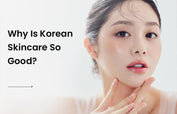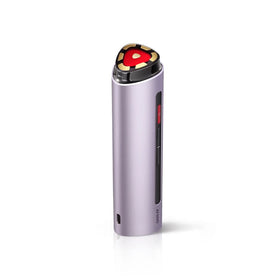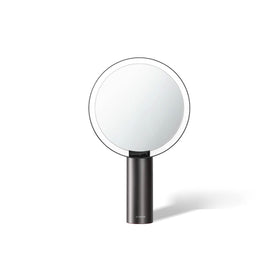詰まった毛穴のためのフェイシャル:今すぐそれらを取り除きましょう!
ナビゲーション
AMIROの親友たち、おかえりなさい
私たちは日々の活動の中で、汗、メイク、汚れなど、様々な環境刺激物質に肌をさらしています。肌はこれらの有害物質から私たちを守ってくれますが、時に過剰な負担がかかり、様々な問題を引き起こすことがあります。小さくて気になる吹き出物は、人々が最も頻繁に経験する悩みの一つです。
はい、私が話しているのは 詰まった毛穴毛穴の詰まりは厄介で、完璧で滑らかな肌を手に入れるのが難しくなることがあります。でもご安心ください!毛穴の詰まりを解消するフェイシャルケアについて理解を深め、完璧な肌を手に入れていただくために、このガイドを作成しました。
毛穴詰まりとは何ですか?
私たちは顔にある小さな斑点にいつも気づいていたかもしれませんが、それらは取るに足らないものだと考えていました。
実際、毛穴は健康な肌を保つ上で重要な役割を果たしています。毛穴は皮脂や汗を排出する通路として機能しますが、詰まるとさまざまな問題を引き起こす可能性があります。 皮膚の問題。
毛穴が詰まるとどんな症状が現れますか?
- 黒ずみ - 開いた面皰には酸化した黒ずみが含まれています 皮脂 毛穴の開口部皮膚の表面に小さな黒い点のように見えます。特に男性は 黒ずみや白ずみの存在にもっと注意を払う。
- 白ニキビ - 閉鎖面皰は、皮膚細胞と皮脂が皮膚の下に閉じ込められた肉芽腫です。皮膚表面の下に小さな痛みを伴う隆起があるように見えます。
- ニキビ - 毛穴の詰まりから発生する炎症性のニキビ(白ニキビや黒ニキビなど)。赤く腫れたブツブツとして現れ、破裂してかさぶたになることもあります。
- 肌の凹凸 - 毛穴が詰まると、肌表面は凸凹し、多孔性になり、凹凸が目立ちます。毛穴の詰まりを放置すると、時間の経過とともに毛穴は大きく深くなります。
- くすんだ肌 - 毛穴が詰まると、皮脂や油分が肌に十分な水分を補給できず、くすんで見え、生気のない印象を与えます。油分は肌に効果的に潤いを与えることができません。
- 過剰な皮脂 - 毛穴が詰まると、肌に潤いを与えようとして過剰な皮脂が分泌され続けます。その結果、Tゾーンがテカったり、肌表面に油滴が付着したり、毛根がベタついたりします。
- 深いシワ - 長期間毛穴が詰まった状態では、 しわ 腫れたり炎症を起こしたニキビ跡を「隠そう」として、鼻や口の周りにシワができることがあります。これらのシワは「ニキビシワ」と呼ばれることがよくあります。
- 炎症 - 毛穴が詰まって破裂したり感染したりすると、ニキビの周りに腫れ、赤み、痛み、熱感が生じることがあります。炎症が治まらない場合、嚢胞性ニキビが発生します。
- ニキビ跡 - 毛穴の詰まりが長期間続くことで、重度または持続性のニキビが、陥入した傷跡、箱型瘢痕、肥厚性瘢痕、またはケロイドを引き起こす可能性があります。適切な治療を受けないと、傷跡は悪化する可能性が高くなります。
毛穴が詰まるのは誰でしょうか?
- 遺伝。ニキビや毛穴の詰まりは家族間で発生することがあります。遺伝的に過剰な皮脂、古い角質、あるいは 毛穴の拡大これにより、ニキビのリスクが高まります。
- ホルモンの変化。思春期、妊娠、月経期におけるテストステロン、コルチゾール、インスリン、成長ホルモンなどのホルモンの変動は、過剰な皮脂の分泌、ニキビの発生、毛穴の詰まりを引き起こす可能性があります。10代の若者、妊婦、多嚢胞性卵巣症候群(PCOS)の人は、この症状を経験する傾向があります。
- 肌の油っぽさ。オイリー肌の人は、皮脂腺の過剰な活動により皮脂の分泌量が増加します。この皮脂が毛穴に蓄積しやすくなり、毛穴を詰まらせ、ニキビの原因となります。オイリー肌の人は、ニキビや毛穴詰まりに悩まされる傾向があります。
- 毛穴の詰まり。毛穴が詰まると、外側に破裂してニキビの原因となることがあります。毛穴は、時間の経過とともに、古い角質、皮脂、毛髪、化粧品の蓄積などによって詰まってしまうことがあります。この毛穴性ニキビは、毛穴の詰まりにつながります。
- 過度のストレス。慢性的なストレスによる高コルチゾールは、過剰な皮脂の分泌とニキビの形成を促進します。ストレスにさらされたり、高ストレス状態に置かれたりすると、ストレスホルモンの増加により、ニキビの発生、炎症、毛穴の詰まりにつながる可能性があります。
- 喫煙。喫煙はコラーゲンを損傷し、血流を減少させ、炎症を促進し、毛穴を詰まらせます。ニキビを悪化させ、治癒を阻害し、毛穴の詰まり、黒ずみ、白ニキビ、吹き出物の増加につながります。
- 過剰な体重増加。過剰な体重増加に伴うインスリン抵抗性の増加とホルモンレベルの上昇は、過剰な皮脂の分泌とニキビの発生を促します。体重増加はニキビの形成や毛穴の詰まりにもつながります。
詰まった毛穴を取り除くにはどうすればいいですか?
毛穴の詰まりを解消する効果的なヒントを10個ご紹介します。
#1 患部を1日2回洗浄します。 低刺激の洗顔料とぬるま湯で洗い、指先で優しくマッサージして毛穴の詰まりを解消しましょう。過酸化ベンゾイルを含む洗顔料を選びましょう。 サリチル酸、 または アルファヒドロキシ酸毛穴の詰まりを解消するのに役立ちます。
#2 定期的に角質を除去します。 週に1~2回、スクラブ洗顔やグリコール酸などのケミカルピーリング剤、または洗顔ブラシを使って、古い角質を取り除きましょう。毛穴に詰まった汚れを取り除き、将来の角質蓄積を防ぎます。ただし、角質を除去しすぎると肌を刺激する可能性があるため、注意が必要です。
#3 ターゲットを絞った治療を適用する。 使用 過酸化ベンゾイルサリチル酸、ティーツリーオイル、またはアルファヒドロキシ酸を含む製品を、詰まった毛穴に直接塗布します。これらの製品は、毛穴の詰まりを乾燥させ、毛穴の詰まりを解消し、皮脂の分泌を抑えるのに役立ちます。 クレイマスク 皮脂を吸収し、汚れを取り除いて毛穴を引き締める効果もあります。
#4 専門家に抜歯を依頼する。 黒ずみや白ずみの除去はエステティシャンにご相談ください。毛穴パックも効果的ですが、毛穴の奥深くまで毛穴を拡張することで、より深い部分の詰まりを解消できます。傷跡や感染症を防ぐため、毛穴拡張は適切に行うようにしてください。
#5 オイルフリーの化粧品を使う。 ニキビができやすい肌に適した、軽いつけ心地のオイルフリー保湿剤を塗りましょう。「オイルフリー」「ノンコメドジェニック」「ウォーターベース」と表示されている、毛穴を詰まらせない化粧品を選びましょう。ミネラルオイルは毛穴の詰まりを解消するのに役立ちますが、保湿剤として長期間使用するには適していません。
#6 過剰な石油生産を管理する。 ホルモン性ニキビや重度のニキビの場合は、皮膚科医に相談し、外用レチノイド、抗生物質、イソトレチノイン錠などの薬を処方してもらいましょう。レーザー/光線療法やコルチコステロイド注射などの治療も、皮脂の分泌を調整し、毛穴の詰まりを解消するのに役立ちます。
#7 炎症を軽減し、傷跡を予防します。 患部を清潔に保ち、抗炎症作用のある過酸化ベンゾイルまたはサリチル酸を塗布し、医師の診察を受けてください。 経口抗生物質 感染の兆候が現れた場合。重度または持続性のニキビの場合は、瘢痕を残さないように医療的なケアが必要になることがよくあります。
#8 毎日保湿し、オイルフリーの日焼け止めを使用してください。 日焼けによるダメージから肌を守りながら、潤いのある肌を保ち、毛穴の詰まりを防ぎましょう。日光にさらされると皮脂の分泌が増加し、ニキビや毛穴の詰まりを悪化させる可能性があります。
#9 根本的な原因に対処します。 ニキビが副作用である場合は、医師に相談して薬を調整してください。ホルモン性ニキビには、ホルモン性避妊薬が効果的です。ストレスを軽減することで、コルチゾールと皮脂の分泌も抑えられます。誘因を管理することで、長期的には毛穴をよりきれいに保つことができます。
#10 RR処理。 RFデバイス 真皮(皮膚の深層)まで浸透する熱を発生させ、コラーゲンの生成を促し、毛穴を引き締めます。これにより、毛穴のサイズが小さくなり、毛穴の詰まりが軽減されます。毛穴の縮小に加え、シワの軽減、肌のトーンの引き締め、エイジングサインの軽減などの効果も得られます。
高額なRF治療や皮膚科への頻繁な通院が心配ですか?それとも、自分に合った「毛穴レス」スキンケアルーティンにまだ迷っていますか?
心配ご無用!ひどい毛穴の詰まりを解消する簡単フェイシャルケアをお試しください。
家庭用RFスキンタイトニングデバイス
皮膚引き締め器具 アミロ R1 プロ フェイシャルRFスキンタイトニング デバイス (ブラックとピンクをご用意)は、お肌を滑らかにし、ハリを与え、毛穴の詰まりを取り除き、毛穴のサイズを小さくします。さらに、6極高周波(RF)、マイクロカレント電気筋肉刺激(EMS)、赤色LEDライト、赤色赤外線(IR)による温熱効果を備えた非侵襲性の4in1スキンケアソリューションは、コラーゲンの生成を刺激し、肌のハリを高め、小じわやシワを軽減します。 血液循環肌を引き締め、リフトアップ効果も期待できます。コンパクトなサイズなので、ご家庭やオフィスでの使用にも最適です。
朗報です!まだまだご用意しております!ぜひお試しください AMIRO S1 フェイシャルRFスキンタイトニングデバイス 毎日のスキンケアをさらに充実させ、毛穴のない肌を実現します。

結論
毛穴の詰まりを丁寧に取り除き、皮脂のコントロールと角質除去を行い、過剰な皮脂分泌や薬の服用といった根本的な問題を長期的に管理することで、毛穴の詰まりを解消し、その状態を維持することができます。簡単で効果的な解決策をお探しの方は、ぜひ当社のおすすめをご覧ください。 AMIRO R1 PRO フェイシャルRFスキンタイトニングデバイス リーズナブルな価格。AMIIROを信頼して、毛穴レスな若々しい肌を手に入れましょう!






